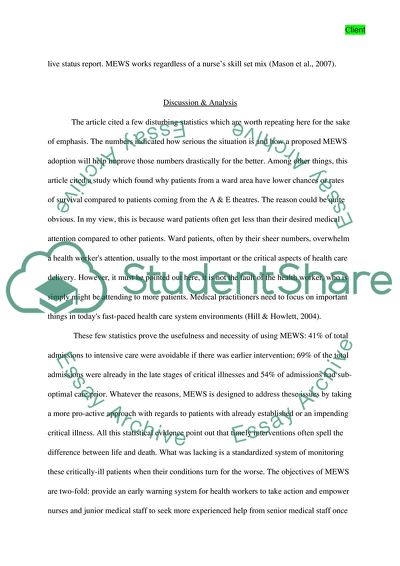Cite this document
(The Modified Early Warning Score Essay Example | Topics and Well Written Essays - 1500 words, n.d.)
The Modified Early Warning Score Essay Example | Topics and Well Written Essays - 1500 words. https://studentshare.org/health-sciences-medicine/1732248-critically-evaluate-an-assessment-tool-you-have-used-in-clinical-practice-the-modified-early-warning-score-mews-assessment-tool
The Modified Early Warning Score Essay Example | Topics and Well Written Essays - 1500 words. https://studentshare.org/health-sciences-medicine/1732248-critically-evaluate-an-assessment-tool-you-have-used-in-clinical-practice-the-modified-early-warning-score-mews-assessment-tool
(The Modified Early Warning Score Essay Example | Topics and Well Written Essays - 1500 Words)
The Modified Early Warning Score Essay Example | Topics and Well Written Essays - 1500 Words. https://studentshare.org/health-sciences-medicine/1732248-critically-evaluate-an-assessment-tool-you-have-used-in-clinical-practice-the-modified-early-warning-score-mews-assessment-tool.
The Modified Early Warning Score Essay Example | Topics and Well Written Essays - 1500 Words. https://studentshare.org/health-sciences-medicine/1732248-critically-evaluate-an-assessment-tool-you-have-used-in-clinical-practice-the-modified-early-warning-score-mews-assessment-tool.
“The Modified Early Warning Score Essay Example | Topics and Well Written Essays - 1500 Words”. https://studentshare.org/health-sciences-medicine/1732248-critically-evaluate-an-assessment-tool-you-have-used-in-clinical-practice-the-modified-early-warning-score-mews-assessment-tool.


